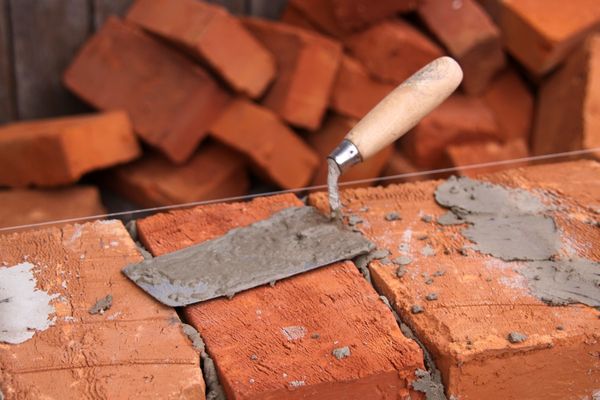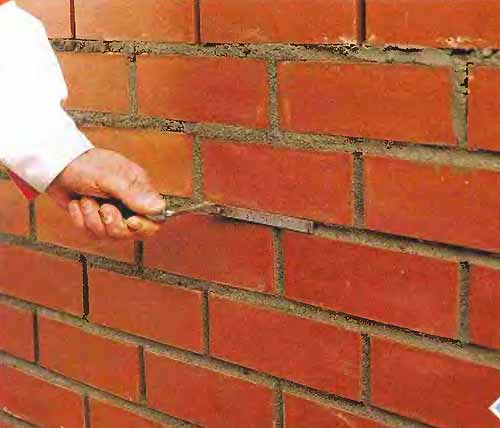The destruction of the inner walls and facades of buildings from the brick is happening both in residential and abandoned structures. There may be a lot of reasons for this: production errors, unsatisfactory operation of premises, structural errors, as well as anyone quality design work. However, with a timely elimination of a defect to use the building, you can still have a long amount of time.
Content
Causes of the integrity of the brick wall
- Different density of soil parts directly under construction.
- Large load on overlap and foundation of the building.
- The absence between structural elements of deformation seams.
- Uneven load on the ground.
- Setting the foundation, etc.
Stages of destruction of brickwork
1. A stress state that does not forms damage in masonry.
2. Education of small cracks in separate bricks (hair cracks).
3. Combining cracks with each other and vertical seams that are separating the masonry.
4. Destruction of brickwork.
Thus, it is important at the initial stages to determine the causes of the arms of deformations and assess the quality of the masonry created, namely the binding of the outer brick walls, the thickness of the seams, respect for the horizontality and filling with them.
Maintenance of brick walls
For the repair of cracks in the outer brick wall, belts and special metal lining, reinforcing the design and not allowing it to collapse. Before starting the work, the crack is stuck with paper, which is tested after some time. If it remained the whole, it means that the deformation ended and can be repaid. If the strip has broken, then you need to look for additional reasons to either eliminate the shrinkage of the foundation using the gain.
In addition, it is used to replace and strengthen the support of masonry using reinforcement, as well as high-quality design design.
In some cases, it may be necessary to strengthen the seasplets using corsets made of reinforced concrete by expanding their cross section.
Recommendations:
- disassembly of the brick masonry of the outer walls with not very large damage is usually performed by independently, with the help of special hand machines, explosive or mechanized method;
- with a manual dismantling, the design of the outer brick walls, isolated on solutions of low grades, is broken by pickle and scrap. Lead it from above-down horizontal rows;
- when disassembling masonry on a solid mixture, a sledgehammer, wedges, scarpel, etc are used;
- disassembly of walls with boot concrete or buffet masonry is created by a jackhammer, pickling or scrap.
Repair and enhancement of brick walls
Repair of brickwork of exterior walls using the joints of the seams
If the cause of the deformation of the masonry was the weathered of the seams on a greater depth, it worsens its heat engineering characteristics, and also reduces the carrying ability. Such a defect can be eliminated by strengthening the seams using the cement mortar.
Before the latch of the walls, the seams are cleared and washed thoroughly with water. Then they should be filled with cement composition and smooth down a special tool.
Jumpers having single cracks are restored to the decomposition of liquid composition (polymer cement or cement).
When eliminating defects in arched jumpers from them, they initially remove the load, and then completely shifted.
Repair of ordinary and clincling jumpers is created by amplifying a lining of railway or steel beams.
Cracked repair in brick walls
After the end of the shrinkage of the building, small flaws in brickwork can be eliminated by a concrete solution, having prepared a wall in advance. If they are wide and large in large quantities, then the boding of a damaged area is used.
Restoration of strongly deformed sections of brickwork
The loss of the carrier ability of some parts of the wall leads to the need to replace them with the entire thickness of the outer brick wall. Such a method allows you to fully restore the former type of building and fix the defect as accurately as possible.
Progress:
- initially, it is necessary to create a temporary fastening of the advanced segment of the wall that is not replaced;
- then it is necessary to disassemble the damaged place, re-shifting it. For this, brick and mortar M100 are used;
- masonry need to be held with a complete landing of the brick. The top between the old and the new masonry is thoroughly sealed with a semi-rigid solution of cement M100;
- when the sewage is driven, which will then be included in the joint work, it is allowed to use the sampling of the mixture using steel wedges;
- demonstration of temporary attachment is made after reaching 50% of the design strength of the new masonry.
Recommendations:
- before starting work on the shower of the walls, it is necessary to eliminate the causes of deformation;
- carrying brick walls that do not need to change overlaps are shifted with preliminary installation of multi-tiered time mounts;
- temporarily created mounts are removed after a week after the completion of the last masonry tier;
- before unloading the required site from the above wall, the discharge beams with a breakdown and embedding their furrows should be laid on both sides. The latter is starting with a more weakened area. All this can be performed using a pneumatic hammer. Vertical gaps between masonry and beam are poured by a plastic composition of cement, and the gaps between the lower surface of the masonry and the riding beam are treated with a rigid and fatty cement solution.
Belt stiffery
To reduce the sensitivity of brickwork, builders are introduced into it a special hard belt (channel), which subsequently perceives tensile efforts and stops the development of deformation.
Types of hard belts:
- local;
- arranged around the perimeter of the building;
- general;
- used when cutting the corner of the structure;
- used when separating the outer wall from the inner;
- used at the break of the building.
Actions to create a belt of rigidity are alternately:
- first on the one hand;
- then with the opposite.
The main condition for the arrangement of rigidity belts is the installation of tie bolts.
Trimming on the facade of the video building:




























